The following is a description of a railway operating session on June 6, 2009 photographed and written by Chris Lyon.
Fred Mills has a wonderful garden railway on which the Ottawa Valley Garden Railway Society runs standard gauge diesels one weekend and narrow gauge steam locomotives the next. The Ironwood, Peter’s Pond and Western Railway is a point-to-point layout with switching assignments at towns and yards along the way.
Rail Ops computer printouts are used to pre-position all the rolling stock before the start of the weekly railway operations. It also generates train orders (switch lists) so that the train crews know where pick up and drop off their assigned cars.
From a garden railway approach you will see many of the popular techniques and innovations to roadbed and track work.
Enjoy!

Here is the passenger yard at the Craig Leigh, the eastern terminal of the railway.

Engineer Ralph Dipple enjoying a pop during the operations. That is a CP safety vest he is sporting.

In the foreground, train crews switching at Spruce, and in the background at Ironwood Junction. Most towns have facing and trailing switches to the local industries and a passing siding off the main.
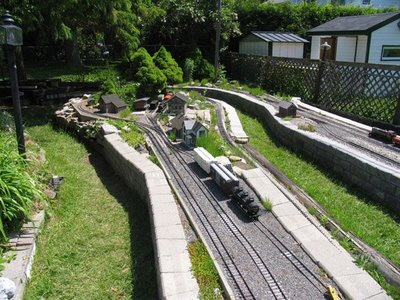
The rock work and paving stone approach provides for a nice venue for the trains and provides distinctive walkways for the trainman to walk with their trains.

A derailment in the yard demands attention from the engineer as he had the switch thrown against him.

In the center, the yardmasters in Nelson Yard are pondering their switching assignments. In the background, train crews are working at Glen Hammond and Bell.

A small wayfreight rounds the curve as it approaches Lily.

Nice scratch built bridges add to this great scene.

I really like the blockhouse which was a common fort in Ontario.
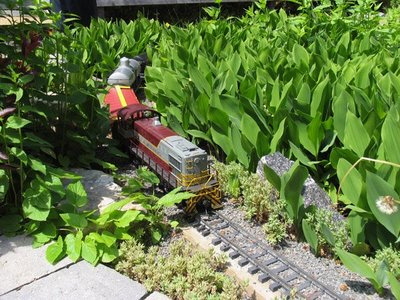
Tiptoe through the tulips with me ee.
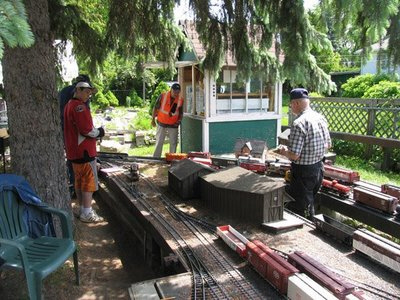
There is always lots of action in Nelson Yard.

The burnt out wooden trestle at the bottom of the picture, forced the railway to install metal bridges and a wider curve around Lily.

Two trains running on the high iron in both directions.

More action in Nelson Yard with the two senior and one junior yardmaster fully engaged.

Yes that crossing signal does operate though it only operates with the permission of the neighbours on special visit days.

Note the over sized switch stand.

Classification is a fun job on this road.
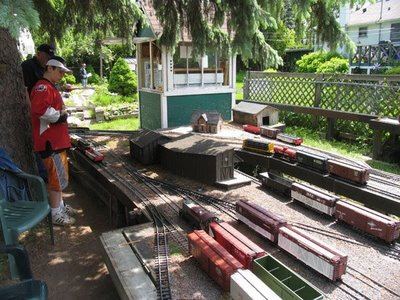
Nice to see this young lad providing the proof there is hope for the next generation of model railroaders.

This is the dispatcher’s shack from which trains are controlled by radio communications in a prototypical fashion.

My wife Lela operated as the trainman directing the engineer on tasks along the route. Her job was to ensure the manifest was correct and the proper cars were dropped, picked up or moved as well as aligning the switches.

The crews are setting the turnout for the meet.

All the locomotives used on the IPP&W are battery powered and radio controlled. That eliminated the necessity of wiring the tracks and switches on this very large and complicated railway.

Train crews at Mercer are waiting for clearance from the dispatcher over two-way radios.

This road has a very interesting crossover which eases the curve in this tight space.

Sometimes things get blocked up in the yards and you just have to relax and wait for clearance to the next town or the passing of an oncoming train.
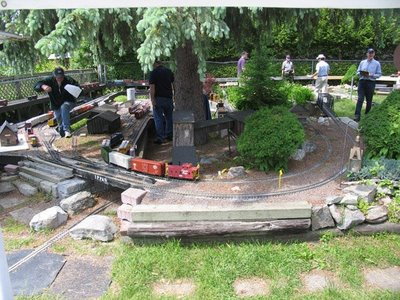
Sometimes you need to take shortcuts to the turnout and it looks like he is in a hurry to get ahead of his train before it reaches a turnout which is thrown against him.
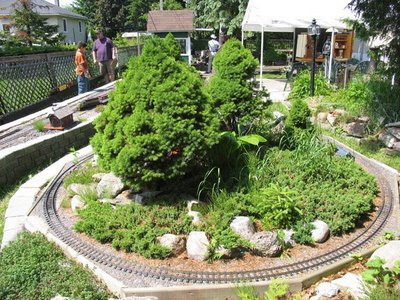
Here you can see the 2×6’s used as a sub roadbed.

Screwdrivers are used to open Kadee couplers, another IPP&W standard piece of equipment. On the left, an engineer makes a radio call to the dispatcher.

A happy brakeman is holding his train orders and getting ready to switch the sidings at Bell.

Firgrove Yard is the western terminal of the railway. The yard master is making final preparations for eastbound train 301.

When all is done, the cars are removed from the railway and stored by location. In two weeks time, Rail Ops will print out the paper work for the next operating session from where we left off.

Yard work is completed as an engineer calls the dispatcher to book off.

This is the newest area and was a rebuild of an older yard. The raised construction was very impressive and is much like building decks.

Sometimes you have to get right in the garden to uncouple.
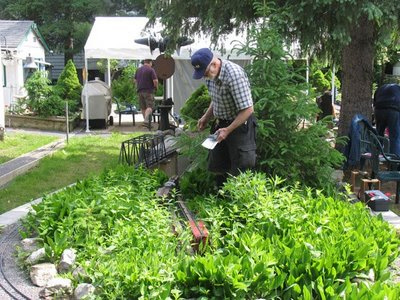
Now I know what they mean when they say a hidden siding.

After the work is done, the crews sit back and socialized over a few hot dogs and pops.

Brad and Tyler are cooking hot dogs to feed the hungry crews as they come off duty.
I hope you enjoyed this tour of another great aspect of the model railroading hobby.




1 comments
This is a fantastic site, I wish I lived closer to you guys so I could help out and participate in the op sessions. If anybody is interested in correspondence with me, I can be face booked or reached by e-mail.Keep up the great work and may this site roll on forever!!!